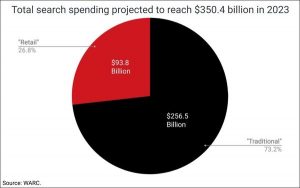Recently, I had a wonderful conversation with Danny Langloss, who is the host of the Leadership Excellence podcast, the City Manager of Dixon, Illinois, and a true student of leadership. Danny asked me a lot of questions about conflict resolution. We categorized conflict as a particular aspect of problem-solving for which leaders need to provide support and clarity, but we also noted three reasons that leaders may not actually be able to lead their way out of conflict using their typical approaches. Luckily, there are ways to overcome these challenges.
1. Leaders may not have the necessary information.
Leaders are often too far from the action to know what’s really going on, and they may not hear the truth from their team members. Because their team members still want to please them, the picture they present may be skewed or unrealistic. Danny suggested that no one ever has more than 80 percent of the puzzle pieces, and leaders often have a lot fewer than that! So it’s crucial to find the folks who do have the necessary info and ask them the right questions. Based on their answers, you can develop a full picture — a kind of panoramic view of the conflict itself along with its roots in organizational behavior, process, and history.
As I explain in my TEDx talk, Why There’s So Much Conflict at Work and What You Can Do to Fix It, some of the questions I use have to do with what’s working well in the organization and what isn’t, what situations make people feel the most nuts, and what people would change if they could. Sometimes employees’ answers relate directly to the conflict we’re trying to resolve, but many times they’re tied to issues that are actually more important to them, which helps you keep things in perspective.
It can be useful to have a neutral third party do this interviewing. Since they don’t have a stake in the conflict, they’re less likely to make assumptions about it. They can stay comfortable asking leading questions about the larger situation and conditions rather than just eliciting recitations of the positions people have already taken. And as an outsider, I don’t jump to conclusions. I ask people to be specific about their opinions and stories, and I pay attention to small details that an insider might take for granted or only at face value.
2. Leaders who think the answer is obvious often don’t communicate enough about what’s important.
To actually make improvements, it’s crucial to create alignment: to name and agree to what we all care about together. Getting people to accept points of agreement makes it more likely that we’ll be able to tolerate each other and work collaboratively even when we come across areas of disagreement.
But most leaders don’t put in enough time and effort to emphasize the areas of agreement and champion the necessary values and actions. They declare the desired goals and results, often without knowing enough about the required processes and how the work will get done. They probably discuss some of these particulars with other leaders. But when they’re making announcements, they’re likely to forget that it’s the first time that most team members are hearing — and thinking about — their conclusions.
Building agreement and creating alignment isn’t an instantaneous process; it takes time, repetition, and consistent attention. What can feel like overcommunication to a leader is often barely enough for the rest of the team to even be aware of the issue. So even within a relatively small functional team, it’s helpful for a leader to draft an actual communications plan that includes presentation, discussion, written follow-up, and structured opportunities over a period of time for additional questions and answers.
3. Leaders may think they have more power in practice than they actually do.
Leaders can misconstrue their positional power to mean that they themselves are the solution to conflicts, as if whatever they want or perceive to be the issue is magically resolved by their very preferences and pronouncements. But despite their formal authority to hire and fire, they can’t enforce how people feel, or how they react to each other. Plus, if you need people to change their behavior, you want them to choose to do it themselves because they believe the new way is better. When you have to rely on enforcement from the hierarchy to enact change, the change will not be robust and resilient; it may be too brittle to last, and eventually may splinter or shatter.
Just as leaders can’t see the entire puzzle, it’s very unusual for a single individual to be able to convince everyone to get on board. Different people are persuaded by different factors and different kinds of presentations. Many employees need to see that people they trust agree that what the leader says is a good thing. So leaders need to develop a network of internal influencers who will signal that “we really can do this” and it will be worthwhile. Leaders can engage these influencers as volunteers in pilots and experiments — both to model the new way and to generate experiential or quantitative data that can be quite convincing in its own right.
Leaders may have formal status and hierarchical authority, but in order to solve thorny problems, resolve longstanding conflicts, and promote change, they’ll need to look beyond themselves and engage the rest of the organization effectively. Otherwise, they’ll be left with empty concepts and frustrated team members.
Business & Finance Articles on Business 2 Community(52)







